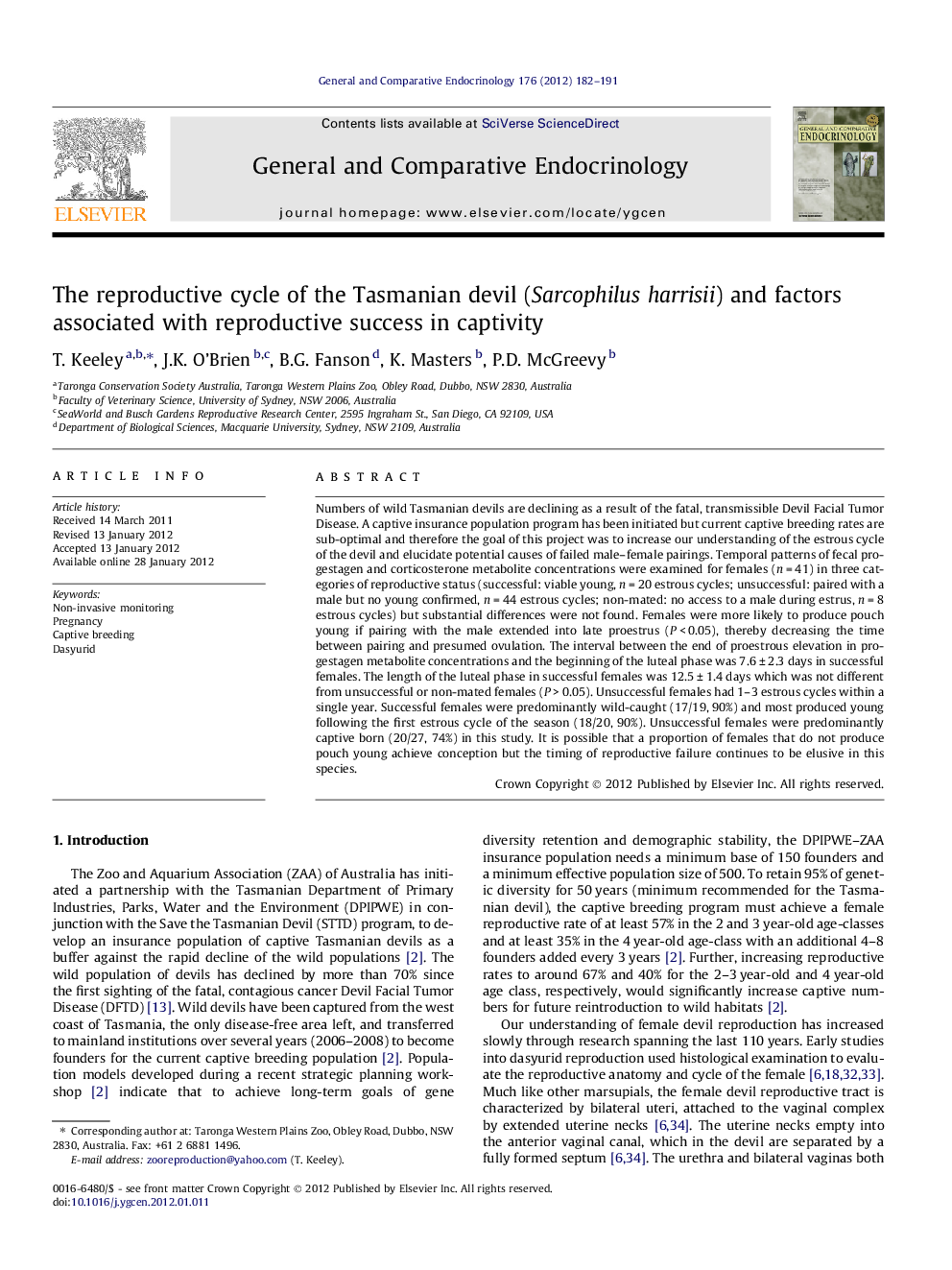| کد مقاله | کد نشریه | سال انتشار | مقاله انگلیسی | نسخه تمام متن |
|---|---|---|---|---|
| 2800719 | 1156122 | 2012 | 10 صفحه PDF | دانلود رایگان |

Numbers of wild Tasmanian devils are declining as a result of the fatal, transmissible Devil Facial Tumor Disease. A captive insurance population program has been initiated but current captive breeding rates are sub-optimal and therefore the goal of this project was to increase our understanding of the estrous cycle of the devil and elucidate potential causes of failed male–female pairings. Temporal patterns of fecal progestagen and corticosterone metabolite concentrations were examined for females (n = 41) in three categories of reproductive status (successful: viable young, n = 20 estrous cycles; unsuccessful: paired with a male but no young confirmed, n = 44 estrous cycles; non-mated: no access to a male during estrus, n = 8 estrous cycles) but substantial differences were not found. Females were more likely to produce pouch young if pairing with the male extended into late proestrus (P < 0.05), thereby decreasing the time between pairing and presumed ovulation. The interval between the end of proestrous elevation in progestagen metabolite concentrations and the beginning of the luteal phase was 7.6 ± 2.3 days in successful females. The length of the luteal phase in successful females was 12.5 ± 1.4 days which was not different from unsuccessful or non-mated females (P > 0.05). Unsuccessful females had 1–3 estrous cycles within a single year. Successful females were predominantly wild-caught (17/19, 90%) and most produced young following the first estrous cycle of the season (18/20, 90%). Unsuccessful females were predominantly captive born (20/27, 74%) in this study. It is possible that a proportion of females that do not produce pouch young achieve conception but the timing of reproductive failure continues to be elusive in this species.
► Female devils are more likely to be successful if mating occurs late in proestrus.
► Unsuccessful female devils had 1–3 estrus cycles within a single year.
► Most successful females were wild-caught and bred on the first estrus cycle.
► Fecal progesterone concentrations were similar in pregnant and non-mated females.
Journal: General and Comparative Endocrinology - Volume 176, Issue 2, 1 April 2012, Pages 182–191